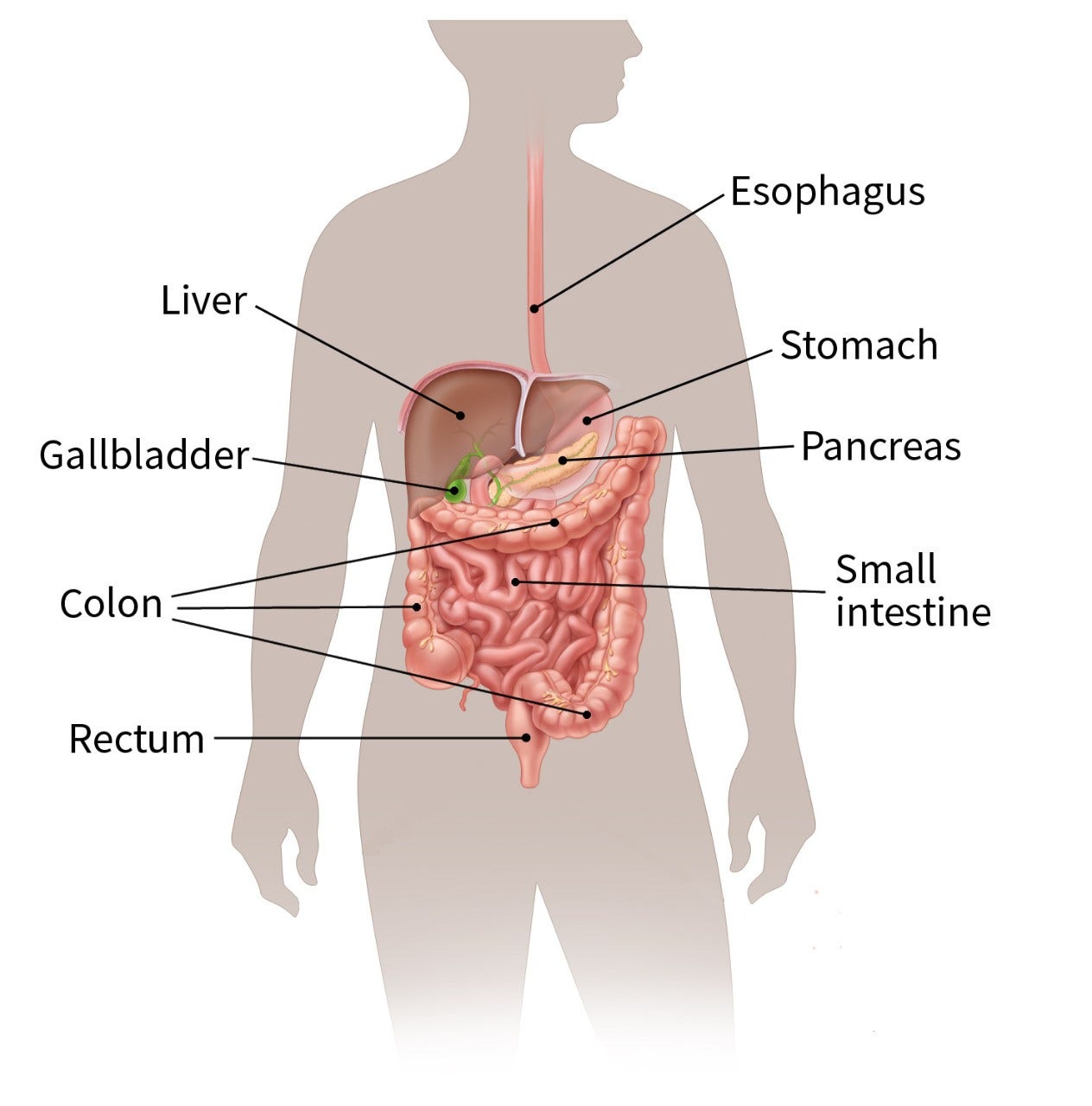What Is a Small Intestine Cancer?
Cancer starts when cells in the body begin to grow out of control. Cells in nearly any part of the body can become cancer, and can spread to other areas of the body. To learn more about how cancers start and spread, see What Is Cancer?
Small intestine cancer starts when cells in the small intestine start to grow out of control. The small intestine is part of the gastrointestinal (GI) tract, also known as the digestive tract. The GI tract processes food for energy and rids your body of solid waste.
Although the small intestine makes up the largest part of the GI tract, small intestine cancers are much less common than most other types of GI cancers (such as colon, rectal, stomach, and esophagus cancers) in the United States.
How the small intestine works
To understand small intestine cancer, it helps to know about the small intestine and how it works.
After you chew and swallow your food, it goes through the esophagus, a tube that carries food through the neck and chest and into the stomach. The stomach is a sac-like organ that helps the digestive process by mixing the food with gastric juices.
The food and gastric juices are mixed into a thick fluid, which is then emptied into the small intestine (also known as the small bowel). The small intestine continues breaking down the food and absorbs most of the nutrients. Even though it's called the small intestine, it's actually the longest section of the GI tract (about 20 feet long).
The small intestine has 3 sections.
- The duodenum: This is the first section and is only about a foot long. A short distance from where the duodenum attaches to the stomach, the pancreatic duct and bile duct enter the duodenum at the ampulla of Vater. Fluids from the pancreas and liver enter the small intestine here, helping to further digest the food.
- The jejunum and ileum: These parts make up most of the small intestine, and are where most of the nutrients in food are absorbed into the bloodstream.
The ileum empties into the colon (the first part of the large intestine). This muscular tube is about 4 to 5 feet long. It absorbs water and some remaining mineral nutrients from the food matter. The waste left after this process goes into the rectum, where it is stored until it passes out of the body through the anus.

Types of small intestine cancers
The small intestine is made up of many different types of cells, so different types of cancer can start here. The 4 major types of small intestine cancers are:
- Adenocarcinomas: These cancers start in the gland cells that line the inside of the intestine. They account for about 1 in 3 small intestine cancers.
- Carcinoid tumors: These tumors are a type of neuroendocrine tumor (NET), and they tend to be slow growing. They are the most common type of small intestine tumor. To learn more, see Gastrointestinal Carcinoid Tumors.
- Lymphomas: These cancers start in immune cells called lymphocytes. Lymphomas can start almost anywhere in the body, including the small intestine. For more on these cancers, see Non-Hodgkin Lymphoma.
- Sarcomas: These are cancers that start in connective tissues, such as muscle. The most common sarcomas in the intestine are known as gastrointestinal stromal tumors (GISTs).
Most experts think that cancer of the small intestine develops much like colorectal cancer. It first begins as a small growth on the inner lining of the intestine, called a polyp. Over time, the polyp can change into a cancer.
Most small intestinal cancers (especially adenocarcinomas) develop in the duodenum. Cancers that develop in the duodenum are often found at the ampulla of Vater. But because this area is closely associated with the pancreas, cancers of the ampulla of Vater (also known as ampullary cancers) are treated like pancreatic cancer.
- Written by
- References

The American Cancer Society medical and editorial content team
Our team is made up of doctors and oncology certified nurses with deep knowledge of cancer care as well as editors and translators with extensive experience in medical writing.
Chamberlain RS, Krishnaraj M, Shah SA. Chapter 54: Cancer of the Small Bowel. In: DeVita VT, Lawrence TS, Rosenberg SA, eds. DeVita, Hellman, and Rosenberg’s Cancer: Principles and Practice of Oncology. 10th ed. Philadelphia, Pa: Lippincott Williams & Wilkins; 2015.
Doyon L, Greenstein A, Greenstein A. Chapter 76: Cancer of the Small Bowel. In: Niederhuber JE, Armitage JO, Doroshow JH, Kastan MB, Tepper JE, eds. Abeloff’s Clinical Oncology. 5th ed. Philadelphia, Pa: Elsevier; 2014.
Overman MJ, Kunitake H. Epidemiology, clinical features, and types of small bowel neoplasms. UpToDate. Accessed at www.uptodate.com/contents/epidemiology-clinical-features-and-types-of-small-bowel-neoplasms on January 4, 2018.
Last Revised: February 8, 2018
American Cancer Society medical information is copyrighted material. For reprint requests, please see our Content Usage Policy.
American Cancer Society Emails
Sign up to stay up-to-date with news, valuable information, and ways to get involved with the American Cancer Society.


